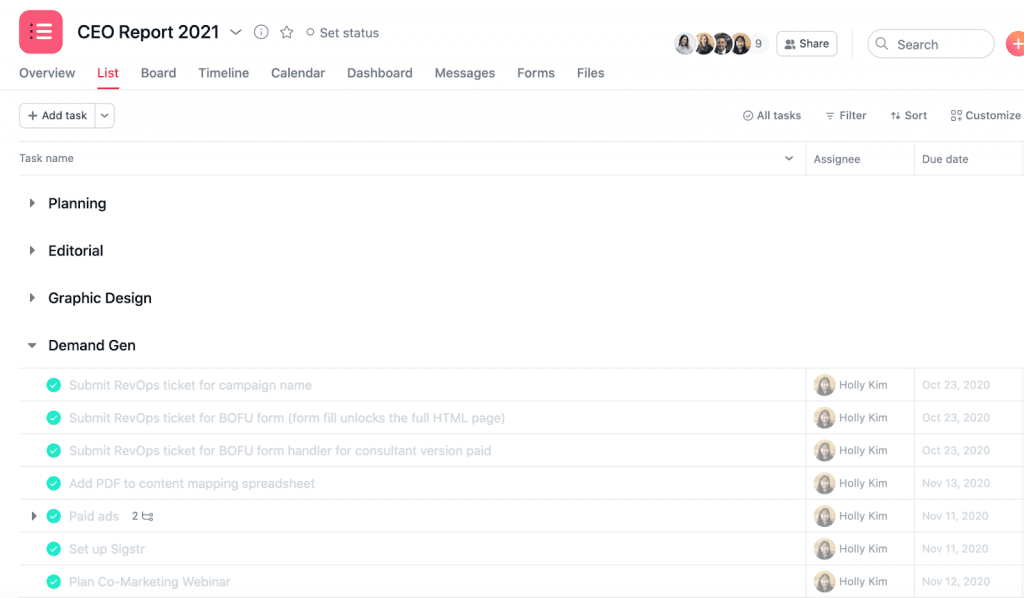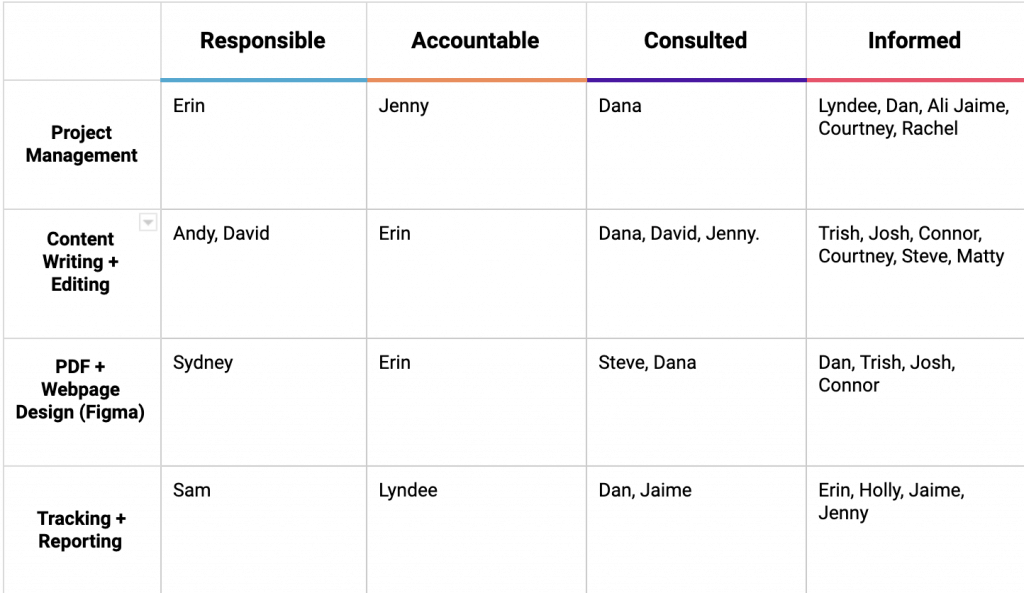Launching a Campaign? Avoid Expensive Mistakes With the DAB Framework
This is the seventh post in our new content series, No Fluffs Given. We’re tired of the fluffy content in our LinkedIn feeds, with no real substance or actionable takeaways. So we’re teaming up with some of the best B2B marketers we know. People who have ACTUALLY done this stuff before. And giving you new, actionable tactics to implement today.
Things that give me goosebumps:
- “The Sound of Silence” by Simon and Garfunkel (Hello darkness, my old friend.)
- When I’m half asleep in the middle of the night and my kid’s standing beside the bed staring at me
- Really cold weather (Duh.)
- This cat:

- That moment after a campaign goes live when someone says, “Uh, I think the form’s broken/I clicked the button, but I never received an email/I got a 404 error.
If you’re running a marketing campaign, you need flawless execution. Or else you’re flushing time and money down the toilet—while giving prospects a sloppy first impression.
I’m gonna share a framework that will help you avoid expensive, sloppy mistakes.
But first, I need you to understand something:
If something goes wrong, you have no one to blame but yourself
You’ve orchestrated the most brilliant marketing campaign on Earth. You’re sure it’s gonna make a big splash—like a grown man cannonballing into a pool.
But campaigns have lots of moving parts and lots of room for error. If you don’t set clear expectations for everyone involved, you could find yourself in a pickle.
Like the time I realized nobody set up the Pardot form handler (because I never said who was responsible for doing it). And we found out a few minutes before the campaign went live (because I never said who was responsible for testing the page).
As we raced around in a panic to get everything fixed, I realized an important lesson: This wasn’t anyone’s fault but my own. I had created unnecessary stress for my team—and myself—by assuming people knew who was responsible for what.
From that day on, I stopped assuming and started dabbing.
Introducing The DAB Framework
OK, so Migos might have popularized dabbing, but The DAB Framework was all me, baby. It consists of three steps: Discuss, Analyze, and Better.

D is for Discuss
Imagine a long line of dominoes. Flick the first one, and the rest come tumbling down in sequential order. Remove a single domino, and you, my friend, are screwed.
Likewise, a marketing campaign is a planned sequence of activities. Your job is to make sure each step happens when and how it’s supposed to. Success requires collective clarity.
Hold a kickoff before the work starts to discuss campaign goals, tasks, and timeline so that everyone’s on the same page.
At the kickoff, talk through a campaign brief that includes the following:
- The why: Marketing leaders struggle to align diverse teams around a shared goal—and it’s even harder when you have a remote or hybrid team. One way to get everyone fired up and moving in sync is tying their work to the business strategy. Kick off the debrief by explaining Who’s this for? and Why are we doing it?
- Project board with timeline: At The Predictive Index, we use Asana. Within my Content Team Portfolio, I create a new project board for every cross-functional campaign. At the debrief, I talk through tasks, assignees, and due dates. I also ask people to raise concerns ahead of time. Like Hey, I’ll be on PTO next month. Can you move the due date back a week or assign the task to someone else?

- RACI chart: Here are a few things I never want my employees to say to me: “I quit,” “You have chia seeds in your teeth,” and “I don’t know who’s doing what.” Luckily, there’s an easy fix for that last one: a simple RACI chart. It outlines who’s responsible, accountable, consulted, and informed for each task or decision.
Note: Most of the time, skill sets and job titles determine who does what—but consider behavioral drives, too. Each team has its own personality. If a workgroup is task-oriented (vs. people-oriented), it can be prone to conflict. You might add a people-oriented employee to that workgroup to improve team cohesion.

- KPIs: You already set the stage for how the work contributes to the overarching business strategy. Now it’s time to share specific direct and indirect metrics you’ll be measuring to determine campaign success. Working toward shared KPIs also builds camaraderie and motivation. Woot!
- Premortem: Back when I was playing with She-Ra and He-Man dolls, researchers found that you can increase your ability to predict future outcomes by 30% by imagining the event already happened. Henceforth, the project premortem was born. After you’ve briefed your team on the plan, ask: “Fast forward to the future and imagine that this campaign was a failure. What did we get wrong?”
Note: We also do pre-parades. These are similar to premortems … but instead of imagining what went wrong, we imagine what went right. And we use the list to strengthen our plan.
A is for Analyze
After the campaign is over, hold a post-mortem to analyze the campaign’s success … or failure. (In step three, you’ll use these learnings to strengthen future campaigns.)
First, pull your metrics, highlighting wins in green and losses in red.
Next, get everyone who was part of the campaign in a room—or on the Zoom. Share the campaign results, then ask two questions: “What went right?” and “What went wrong?”
Encourage them to think not only about channels and tactics but also teamwork and process.
Let them know the exercise isn’t about placing blame on anyone. It’s to help you work better together.
Even if you hit your goals, there’s usually something that went wrong. Like an SME didn’t review the copy until the night before launch day then asked for revisions, causing the writer and designer to work into the wee hours of the morning. As the campaign leader, you have the power and the responsibility to stop that from happening next time.
I try to be sensitive to the fact that people have different needs and preferences based on how they are behaviorally wired. While some employees are comfortable brainstorming out loud and sharing ideas on the fly, others break out in hives at the mere thought of it

That said, when I’m running a group activity—whether it’s a premortem, a postmortem, or anything else—I optimize for different behavioral styles. You can do the same.
Give the group a heads up that everyone will be expected to share an idea at the meeting. This way, the people who like to prepare their thoughts in advance can. And everyone else can wing it.
B is for Better
“Fool me one time, shame on you. Fool me twice, can’t put the blame on you.” – J. Cole
I take the same approach when it comes to making mistakes at work. Drop the ball once, that’s OK … I’m gonna learn from it. But hell WILL freeze over before I drop the same ball twice. That’s because I use my failures to refine my processes.
Process is errrrrrything.
As a final step, better your campaign process by implementing post-mortem learnings.
It might be as simple as adding a new task to your project board template.
Or you might find you need to rethink and refine an entire process.
Here are a few examples of how I’ve bettered my process:
- I knew I dropped the ball by forgetting to assign someone to set up the Pardot form handler. I fessed up to my mistake at a post-mortem then added a “set up form handler” task to my project board template so it wouldn’t happen again.
- At a post-mortem, someone said, “We had new people doing things for the first time. People were unclear on how to move forward, and people had lots of questions.” Afterwards, I refined my campaign process by adding a new step: walking the group through the project board step-by-step before beginning work so they could ask questions up front.
OK, imagine I’m yelling this next bit from the mountaintop … because that’s how important it is.
Make improvements right after the post-mortem. Like most things in life, if you save it for “later,” you might never get around to it. Bettering your process needs to be a priority.
Setting clear expectations is an act of love
At a live show in 1966, Art Garfunkel told the crowd that “The Sound Of Silence” is about “the inability of people to communicate with each other, not particularly intentionally, but especially emotionally, so what you see around you are people unable to love each other.”
The inability to communicate clear expectations underpins many campaign failures. It also underpins many dysfunctional teams.
When you don’t communicate clear expectations, you set your co-workers up to fail.
When you do communicate clear expectations, you set them up to succeed.
In that way, setting clear expectations is an act of love.
If you love your team, set them up to succeed.
Go the extra mile. Do the extra prep.
I promise it’ll pay off.
Meet Erin Balsa
Marketing Director, The Predictive Index
Erin Balsa is a writer, editor, and content marketer. At The Predictive Index, she helped launch a new market category and create demand for a blue ocean product to secure a $50M Series A. She’s also written for leading B2B SaaS companies, including HubSpot, Drift, G2, and Greenhouse.
Connect with Erin on LinkedIn here.



